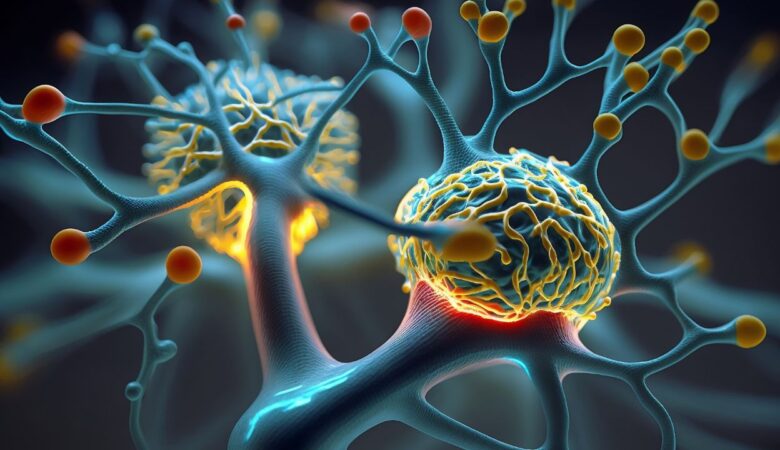Early Intervention in Speech-Language Pathology: A Key to Success
Introduction to Speech-Language Pathology Welcome to the world of Speech-Language Pathology, where words become bridges to communication and success! Whether you’re a parent, educator, or simply curious about child development, this blog post is here to shed light on the power of early intervention in speech and language therapy. From understanding what early intervention entails to recognizing common speech and language disorders in children, we’ll explore how taking action sooner rather than later can make all the difference. So grab a cup of coffee (or tea!) and join us as we embark on this journey towards unlocking every child’s potential through early intervention in speech-language pathology. Get ready for an informative and eye-opening read that will leave you inspired by the incredible impact it can have on a child’s life. Let’s dive right in! Also read: How Embracing a Spiritual Lifestyle Can Help Improve Your Mental Health Understanding Early Intervention Early intervention in speech-language pathology refers to the identification and treatment of communication disorders at the earliest stages of a child’s development. It is focused on providing support and therapy services to children who may be experiencing difficulties with their speech, language, or overall communication skills. The goal of early intervention is to address these challenges as early as possible, when the brain is most receptive to learning and development. By intervening during this critical period, we can help children overcome their communication difficulties and improve their overall quality of life. Early intervention involves a multidisciplinary approach that includes speech-language pathologists working closely with parents, caregivers, teachers, and other professionals involved in the child’s care. Together, they develop individualized plans tailored to meet each child’s specific needs. Through early intervention, children have greater opportunities for success in school and social settings. They are better equipped to communicate effectively with others, participate actively in class discussions, express their thoughts and ideas clearly, and build strong relationships with peers. Research has shown that early intervention can significantly improve outcomes for children with speech and language disorders. The earlier these issues are identified and addressed through therapy sessions targeted towards improving communication skills such as articulation exercises or language comprehension activities – the better chance children have at catching up to their typically developing peers. By identifying potential communication problems early on – such as delayed speech development or difficulty understanding spoken language – parents can seek professional help from a speech-language pathologist who specializes in pediatric therapy services. The Importance of Early Intervention in Speech and Language Development Early intervention plays a crucial role in the development of speech and language skills in children. It provides them with the support they need to overcome any communication challenges they may face early on, setting them up for success later in life. By identifying and addressing speech and language delays or disorders at an early age, we can help children build a strong foundation for effective communication. This is especially important because communication skills are essential for social interaction, academic achievement, and overall well-being. When speech or language difficulties go untreated, it can have long-lasting effects on a child’s development. They may struggle to express themselves clearly, have difficulty understanding others, experience frustration or anxiety when communicating, or face challenges in forming relationships. Early intervention allows us to intervene during the critical period when a child’s brain is most receptive to learning new skills. The earlier we start therapy, the greater the chances of achieving positive outcomes. Speech-language pathologists (SLPs) who specialize in early intervention use evidence-based techniques tailored to each child’s unique needs. They work closely with parents and caregivers to provide strategies that promote communication development both at home and in other environments like school or daycare. Through play-based activities and targeted interventions, SLPs help children develop their vocabulary, articulation skills, sentence structure, listening comprehension abilities, as well as social communication skills such as turn-taking and following directions. With early intervention services provided by skilled professionals like SLPs along with consistent practice at home and school settings; many children make significant progress towards reaching age-appropriate speech-language milestones. This not only improves their ability to communicate effectively but also boosts their self-esteem and confidence. Common Speech and Language Disorders in Children Speech and language disorders can impact a child’s ability to communicate effectively. It is important for parents and caregivers to be aware of the common speech and language disorders that children may experience. Here are some of the most prevalent ones: Articulation Disorders: This disorder affects a child’s ability to pronounce sounds correctly. They may substitute, omit, or distort certain sounds, making it difficult for others to understand them. Language Disorders: These disorders involve difficulties with understanding or using language effectively. Expressive language disorder refers to difficulty expressing thoughts or ideas, while receptive language disorder refers to difficulty understanding spoken information. Stuttering: Stuttering is characterized by disruptions in fluency, such as repetitions of sounds or syllables, prolongations of sounds, or blocks where no sound comes out at all. Apraxia of Speech: This neurological condition affects a child’s ability to plan and coordinate the movements necessary for clear speech production. Voice Disorders: Voice disorders can result in hoarseness, breathiness, strained voice quality, or complete loss of voice due to problems with vocal cord function. Recognizing these common speech and language disorders in children is crucial because early intervention can greatly improve outcomes for these individuals. If you notice any signs or concerns regarding your child’s communication skills, it is essential to seek professional help from a qualified speech-language pathologist who specializes in early intervention therapy. Remember that every child develops at their own pace; however if you have persistent concerns about your child’s communication abilities compared to their peers, don’t hesitate to reach out for support! The sooner intervention occurs after identifying an issue through comprehensive evaluation by an SLP (speech-language pathologist), the better chance your little one has at overcoming challenges associated with these common disorders! Signs to Look for in a Child’s Communication Skills As parents, it is important to










